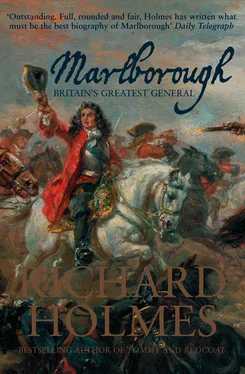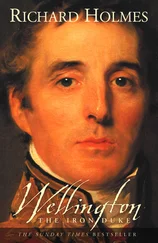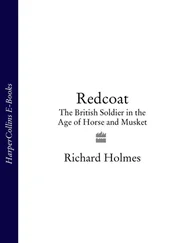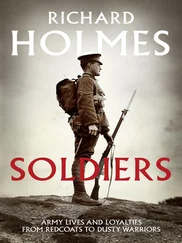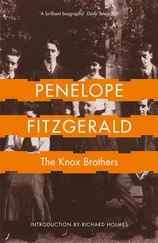The campaign was now reaching its climax. Monmouth’s first option had been to march straight for London, sustained as he hoped by a vast and unstoppable popular rising. When, disobligingly, this support failed to materialise, he sought to base himself on Bristol (whence he could communicate with supporters elsewhere in the country), strengthen and train his army, and only then head for the capital. With the swing away from Bristol his campaign had teetered beyond its culminating point, and he was fast running out of options. Feversham, for his part, had never planned to fight until his army was complete, and time was now on his side.
Poor scouting led the royal army, heading south on Monmouth’s heels, into an unplanned clash at Norton St Philip on 27 June. Its advance guard received a bloody nose, staunched only by the arrival of Churchill, who ‘secured the mouth of the lane with his dragoons and lined the hedges on each side with foot’, providing a secure base which enabled Feversham to extricate himself. Despite this brief setback, Feversham remained determined to maintain close contact with Monmouth, whose army, suffering the effects of repeated bad weather and evident failure, was haemorrhaging deserters. Monmouth briefly considered trying to sidestep Feversham by making for Warminster and then heading for London, but Feversham got wind of this from sympathisers and deserters, and marched from Bradford on Avon early on 29 June to block the rebels’ route at ‘Westbury under the Plain’.
The train of artillery at last arrived on the thirtieth, and Feversham then edged south-westwards, gently shadowing Monmouth, whose numbers shrank daily. On 4 July Churchill wrote to Lord Clarendon from Somerton. He was now evidently as anxious about his career as he was about the outcome of the campaign. He told Clarendon that:
nobody living can have been more observant than I have been to my Lord Feversham … in so much that he did tell me he would write to the King, to let him know how diligent I was, and I should be glad if you would let me know if he has done me that justice. I find, by the enemy’s warrant to the constables, that they have more mind to get horses and saddles than anything else, which looks as if he has a mind to break away with his horse to some other place and leave his foot entrenched at Bridgwater, but of this and all other things you will have it more at large from my Lord Feversham, who has the sole command here, so that I know nothing but what it is in his pleasure to tell me, so that I am afraid of giving my opinion freely, for fear it should not agree with what is the King’s intentions, and so expose myself. But as to the taking care of the men and all other things that is my duty, I am sure nobody can be more careful than I am; and as for my obedience, I am sure Mr Oglethorpe is not more dutiful than I am … 71
Oglethorpe, scion of a Yorkshire royalist family, also enjoyed the personal favour of James II. His conduct so far had kept him in Feversham’s eye, and at this juncture there was every chance that he would emerge with at least as much credit as Churchill. In the event Oglethorpe made significant mistakes at Sedgemoor but did indeed prosper. He stayed loyal to James in 1688 and refused to swear allegiance to William till 1696, thus destroying his military and political career. One of his sons, James Edward, went on to found the American state of Georgia; another, Lewis, was mortally wounded when Marlborough stormed the Schellenberg in 1704.
However, in 1685 all this lay in the future. When Churchill told Clarendon, ‘I see plainly that the trouble is all mine and the honour will be another’s,’ he was at least as suspicious of Oglethorpe as he was of Feversham. He was Feversham’s second in command, but was kept in the dark as to his plans, while the cavalry pursuit was entrusted to Oglethorpe, leaving Churchill with command of the foot. He was actually promoted major general in July, though he probably did not know of his good fortune till after Sedgemoor had been fought.
It was to Sedgemoor that Churchill’s steps now turned. While the royal army was at Somerton news arrived that the rebels were fortifying Bridgwater, where they had arrived on 3 July, as if they proposed to make their stand there. One of Feversham’s officers had ridden over the moor, and suggested that there was a good campsite on its edge, near the village of Westonzoyland. The royal army arrived there on Sunday, 5 July, and William Sparke, a local farmer, climbed the tower of Chedzoy church to see it moving into camp. He dispatched his herdsman, Benjamin Godfrey, to tell the Duke of Monmouth what had happened. 72 The citizens of Taunton had firmly informed Monmouth that he would not now be welcome to return, and he had decided to march northwards once more, heading yet again for Keynsham bridge and Bristol. However, Godfrey’s news induced him to change his mind. He determined to mount a night attack on the royal army, interviewed Godfrey, and may well have spoken to William Sparke and climbed Chedzoy tower to see the ground for himself. So much of what happened that busy afternoon has become the stuff of legend, but one credible story has Monmouth spot the colours of Dumbarton’s Regiment, which had fought under his command in France and ‘by which he had been extremely beloved’. He told one of his officers, ‘I know these men will fight and if I had them I would not doubt of success.’ 73
The field of Sedgemoor is a squarish slab of tussocky lowland, each of its sides roughly three miles long. The Bussex Rhine, marking its south-east border, oozed into the River Parrett, its south-west edge, two miles from Westonzoyland. North-east of the village the Bussex Rhine joined the Black Ditch, the north-eastern boundary of the battlefield. The smaller Langport Rhine curled out like a comma from the Black Ditch just south of the cornfields bordering Chedzoy. The main road to Bristol from Bridgwater, marking the north-west edge of the field, ran across the moor via the ‘Long Causeway’. Just over two miles from the town the ‘Short Causeway’ carried a track to Chedzoy, out on the moor. Another metalled road curled from Westonzoyland to Bridgwater by way of Panzoy Farm.
On 4 July Captain Coy’s troop of the Royal Dragoons flicked forward towards Bridgwater, met a strong body of Monmouth’s horse and got off ‘without any considerable damage on either side’. Feversham seems to have believed that the main body of the rebels would stand siege in Bridgwater, for he sent word to Bath to hasten the arrival of his ‘mortar piece’, no real use to him in the field but able to pitch its explosive shells over walls. His men went into camp just north of Westonzoyland, with the Bussex Rhine between them and Bridgwater, a little over three miles away. Recent research suggests that the Bussex Rhine was perhaps eight and a half metres wide but, in the area of the battlefield, only thirty centimetres deep. Much bigger rivers have had less momentous consequences.
Feversham’s infantry pitched their tents in a single line behind the Bussex Rhine, leaving enough ground between camp and ditch for them to form up in line of battle. The cannon were on the infantry’s left, ‘fronting the great road’ to make it easier to get them on the move again next morning, and the horse and dragoons were quartered in Westonzoyland. The official account of the battle emphasises the trouble that Feversham took to guard against surprise. Captain Coy’s dragoons watched the crossings of the River Parrett at Barrow Bridge and Langport to the army’s left rear. The road to Bridgwater was soundly
picketed. Captain Upcott of the Oxford Blues had a ‘grand guard’ of forty troopers, essentially a stationary sentry-party, out on the moor beyond Panzoy Farm. There were forty musketeers of the Foot Guards behind the walls of a sheep fold (‘walled man-high’) further towards Bridgwater, with plenty of sheep ticks and few opportunities for tow-row-rowing. Finally, a party of a hundred men of the Blues and fifty dragoons under Lieutenant Colonel Sir Francis Compton was further forward still, providing sentries and small patrols to screen the moor and able to fall back onto the musketeers and the cavalry grand guard if they came under pressure.
Читать дальше
